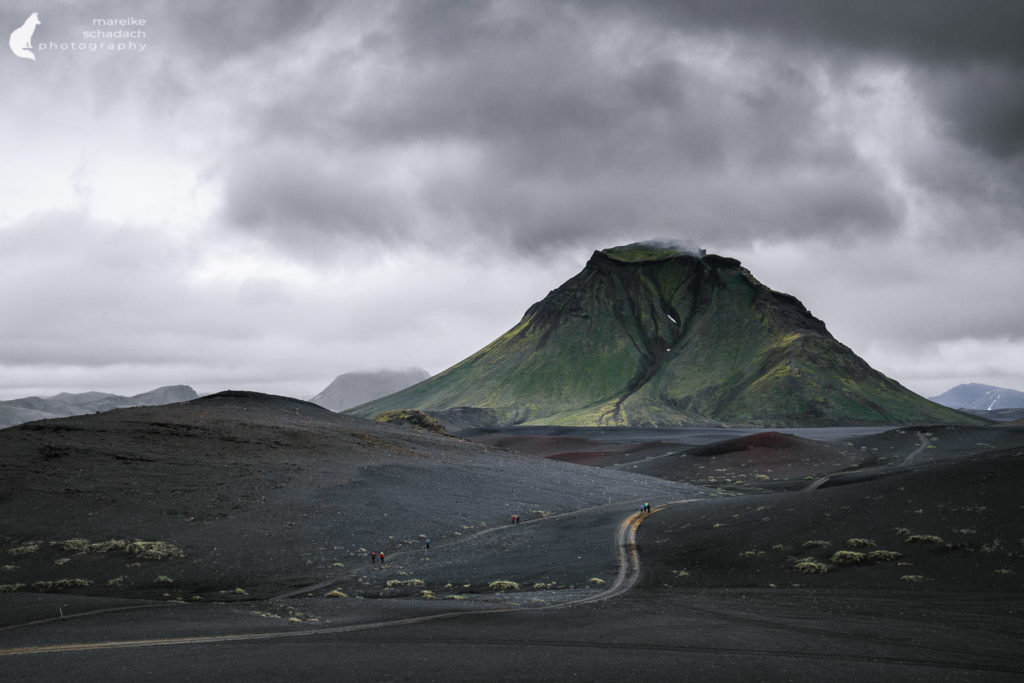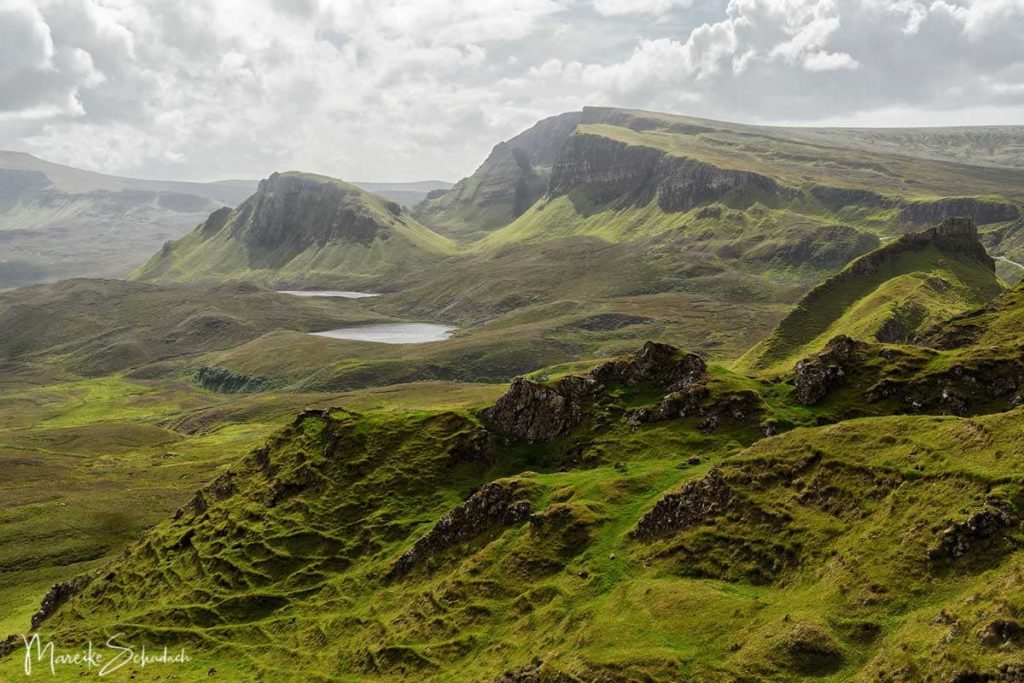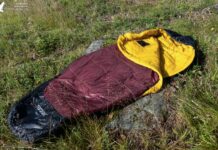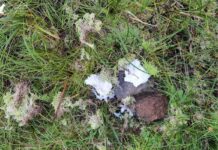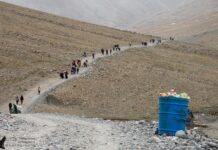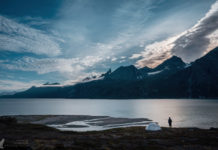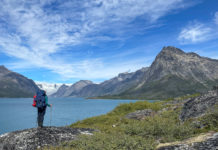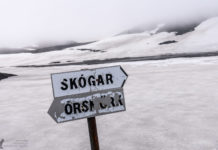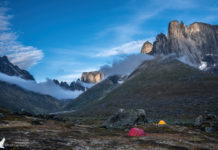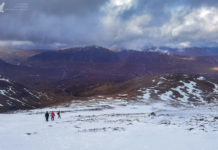In cooperation with the Guide Academy Europe and TREKK'N Guide. Advertising..
Sweden. Only in retrospect, as I look through the photos and write this article, do I realize how many topics we covered during the Wilderness Guide Training in Vindelfjäll. Much of it was integrated into the course in a very natural way, so I picked it up almost incidentally and rather unconsciously. Christoph Maretzek, the founder of the Guide Academy Europe, explained other things in detail in individual steps and had me practise them again and again, such as making a fire. Even with wet wood! Other important topics for us were nature conservation on tour, intercultural competence and the responsibility you take on as a guest of a country or as a guest in nature.
I'll show you a few things we did during our wilderness guide training tour in this article. I'll stick to the surface because Christoph can better explain the exact details and procedures, tricks, and tips in his courses. Click here for the Guide Academy Europe (GAE) courses and here for TREKK'N Guide..


With Christoph Maretzek and the opportunities he offers through the GAE in terms of training and with TREKK'N Guide for leisure activities, I have come across a treasure trove of knowledge, skills, and (training) experience from a whole lifetime of touring. A treasure that has enriched me personally. Especially nature conservation on tour and the combination of modern outdoor life and traditional handicraft techniques, as every farm boy, every indigenous person, and every wilderness traveler used to know. Be it making a new handle for the axe on the road, repairing a rucksack, building a pack board, or a knife with the simplest of tools.

What is Wilderness Guide Training about? Why am I doing this at all?
Nothing is easier than closing the door behind you and simply setting off. Even from Berlin, it's not far from the great outdoors. And if you like it a bit more secluded, you can just get on the train and drive a little way. So far so good. When it comes to taking the right equipment with you, knowing how to use a map and compass, or predicting the weather based on the clouds, it gets a bit more challenging. But thanks to my previous Trekking Guide Training at the Guide Academy, that and much more that goes with a trekking tour also works.

Anyone who knows me knows that I love the remote areas of northern Europe with treeless landscapes and mountains, such as Greenland, Iceland, and northern Scandinavia. Areas where only a few people are still out and about and there are only narrow paths. Areas where nature makes the rules and doesn't care whether the tent is waterproof, whether you can get the fire lit, or whether you've twisted your ankle. Areas where there are no general terms and conditions and where it is better not to rely on a prompt rescue in an emergency.
Welcome to the wilderness! In a world that most of us first have to get to know again. We have forgotten how to observe and interpret the natural world around us. We are also rarely born with manual skills and creativity. But these are essential on wilderness tours and need to be learned and practiced. Only those who can improvise along the way and repair their equipment if necessary will make progress. This is exactly where the Guide Academy's Wilderness Guide Training comes in.
Preparation for Work and Tours in the North
And then there's something else: I'm planning to work on a husky farm in Finland for a few months from April 2024 and then hike long tours in Sweden. The Wilderness Guide training is part of my preparation for this. As I will also be doing a lot of manual work on the farm, the training also includes three craft/bushcraft modules for me. But there will be a separate article on this later. However, there is already a small foretaste at the end of this article.
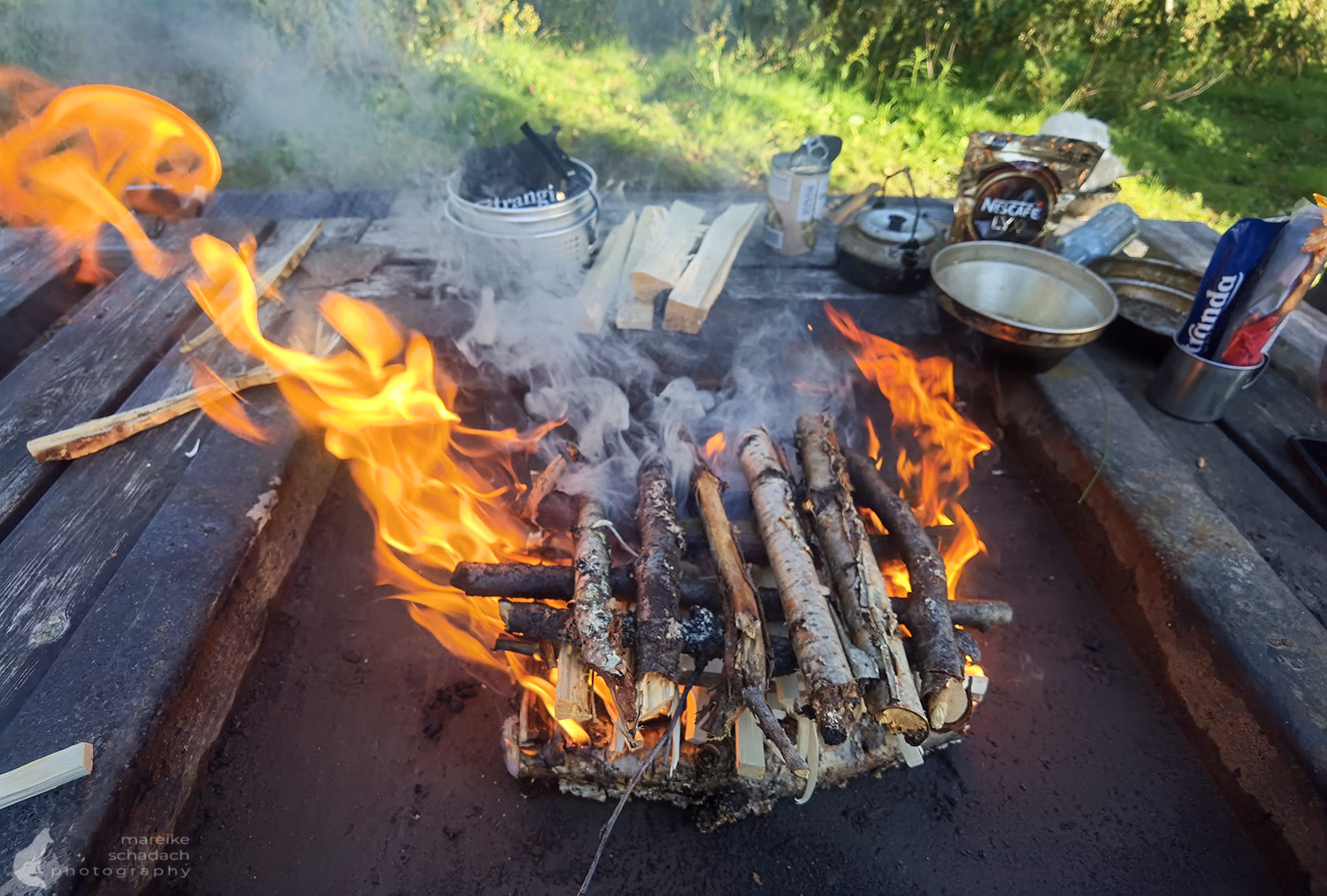
First things first: Nature Conservation on Tour
Every year, the right of public access attracts numerous nature lovers, outdoor sports enthusiasts and adventurers to Scandinavia. However, in the belief in boundless freedom, boundaries are repeatedly crossed. If you don't find out beforehand what you are allowed to do and what you are not allowed to do, you can quickly put your foot in your mouth. "Don't disturb and don't destroy anything" is the motto. Quite simple really, isn't it? If everyone sticks to it and takes responsibility, then not only nature is preserved but also everyone's rights. Because the fact that we are allowed to use nature so freely in Scandinavia - especially as guests of a country - is by no means a matter of course.
Here you can read about Everyman's Right..
At the Guide Academy Europe, Conservation on Tour is taught and practiced with the "10 Golden Rules for Guides". Those who adhere to these rules show professionalism and responsibility towards our nature and help to preserve what we love most.
The 10 Golden Rules for Guides
#1 Do not leave paths unnecessarily
#2 Cook on the stove if feasible
#3 Fire and camp only in safe places
#4 Avoid protected areas, spawning and breeding grounds
#5 Avoid garbage and take it back with you
#6 Protect animals and plants
#7 Know and observe local rules
#8 Respect the local way of life
#9 Pass on your own knowledge
#10 Guiding by example
©TREKK’N Guide 2018
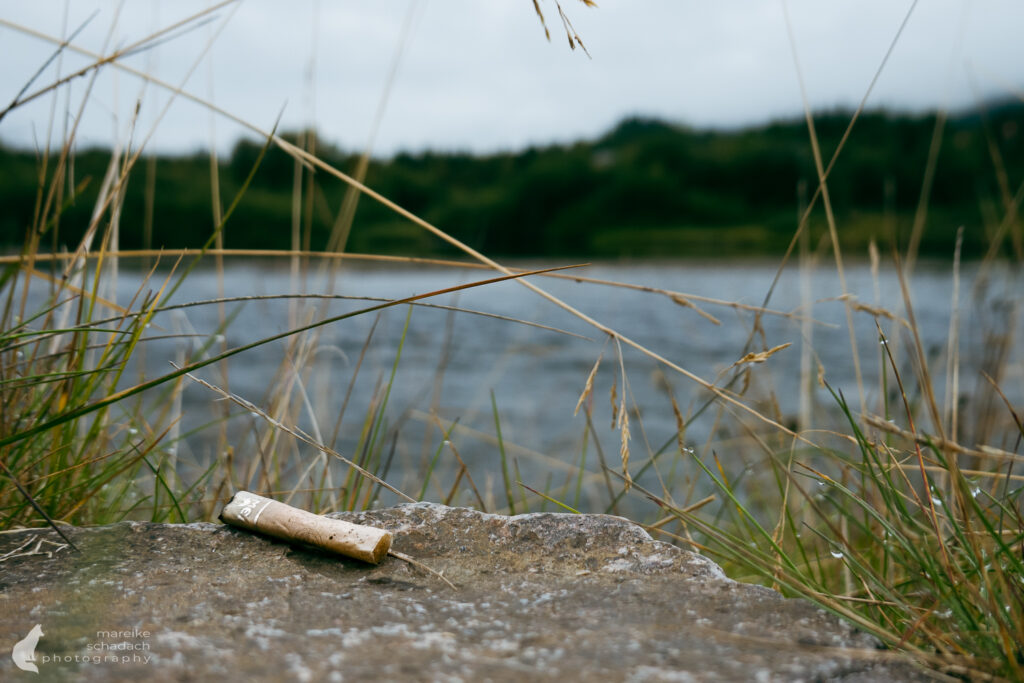
We spent a lot of time on the trail dealing with responsible campfires and washing on tour and also filmed short clips about it. I was particularly amazed at how much water you need to put out a campfire. When we thought it was extinguished, we still found pockets of embers under the stones surrounding the campfire. We needed a good three liters of water in total!



A Word about the Weather
Up in the fjell, the weather rules the world. It decides where we go or whether we go at all. Many tough guys and gals say "there's no such thing as bad weather, only the wrong clothes", but that's only half the truth. The other truth is that bad weather is often the reason why some hikers have fatal accidents. Or that rescue teams have to be called out and the rescuers themselves become drawn into risky activities.
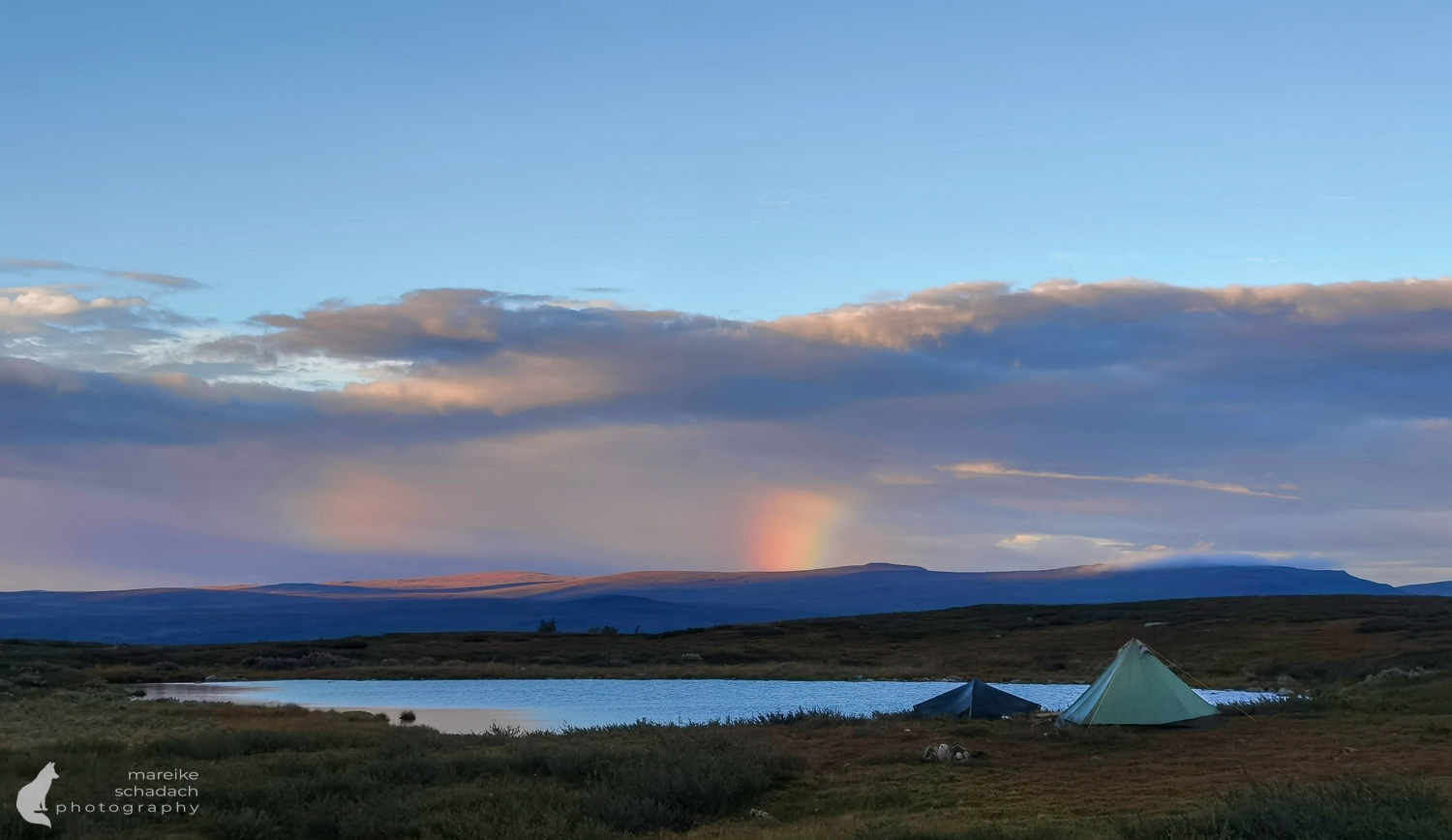
Sound skills, training and good equipment are essential. Just like common sense and sensible consideration of the conditions. We therefore changed our route planning on the way and did not go into the mountains of the Ammarfjäll, far away from any paths and shelters, due to the forecast of heavy rain and storms. Instead, we continued on to Rävfallsstugan. A good choice!
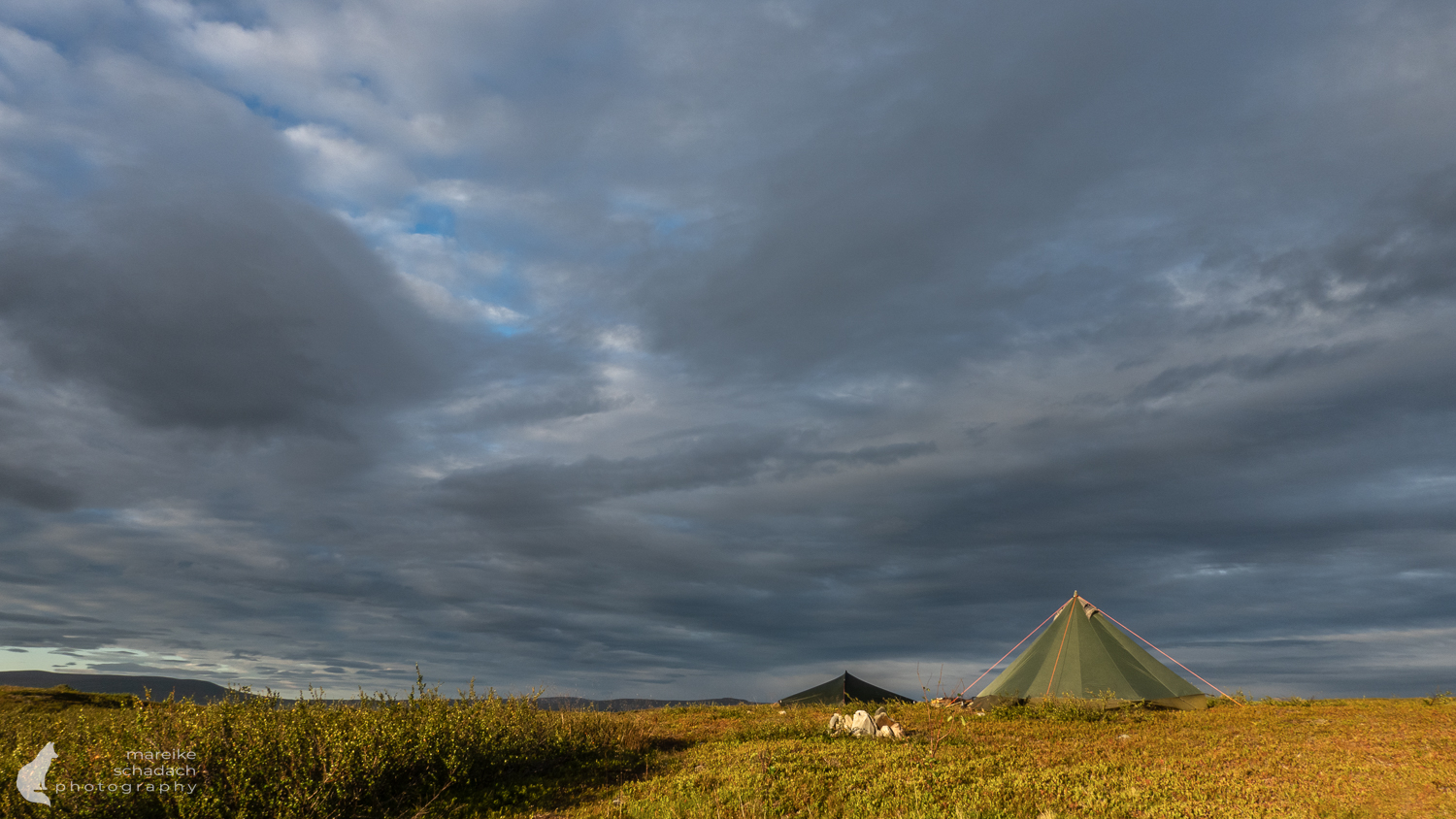
Craftsmanship on Tour
Knife sheath, saw handle, wobbler, and float
If you are traveling away from supermarkets, DIY stores, or Amazon prime, you are well served with a sharp knife, a well-thought-out repair kit, a little imagination, and dexterity.
During our Wilderness Guide training and the subsequent stay at Värdshus Ammarnäs, we made two plugs, two fishing floats, a knife sheath and a simple handle for a saw blade. We tried out the wobblers in the water. With a little extra lead, one of them submerged well. The other had a little more buoyancy and swam in a sideways position just below the surface. Almost like a real injured fish. We hadn't fitted any hooks during the tests as our fishing license had expired in the meantime - yes, that's right, you need a fishing license for many waters in Sweden too. You can find more information here or at the local tourist information office.

Christoph worked out the knife sheath with the axe and knife. The knife sheath was not quite finished during the tour, but at least it was ready for use as protection for the Mora knife he found.
Today's Outdoor Life and Traditional Craftsmanship
Today's outdoor life and traditional craftsmanship are a great combination! Two different worlds at first glance...but if, for example, your canoe is torn away and you are thrown back on your remaining equipment, then the value of your own craftsmanship becomes apparent on the road. By this I don't just mean bushcraft skills, but solid knowledge and skills about types of wood and their usability, how to make tools with little to nothing, how to repair and maintain them, as well as how to make your own things based on original tools in workshops. If you only have a nail left in an emergency, you can make a lot of things out of it, for example a blade, an arrowhead, binding material, a rivet, a drill, hooks or fasteners.
The axe and the knife were the basic equipment of all hunters, travelers, and soldiers in past centuries for a reason...from this, special techniques have developed that can be used to make life easy for yourself outdoors, based on the full equipment of your own workshop. Or to keep yourself alive in an emergency.

Lost your Map? Let's make a Sketch
Has the hiking map flown away? The smartphone and GPS batteries are flat? And now what? The only thing you can do now is to hope that the next hiker passing by will have a coffee with you and let you copy their map. And this is how it works:
Did you grow up without a smartphone, scanner, or photocopier? Then you're probably still familiar with tracing. A blank piece of paper is placed on the image to be copied. The translucent contours are then simply traced. If the translucency is not sufficient, you can help yourself by placing the card and paper against a window or even using a flashlight to provide light from behind.
But what if you don't have blank paper but just a piece of cardboard or fabric? Then there's no more tracing. Then you can transfer the map using a grid. It is best to use the grid of the coordinate system in the map as the grid. The individual elements of the map are then transferred one by one: the paths, trails, bodies of water, peaks, contour lines, vegetation and prominent points such as huts or ruins.

A little Hut Etiquette
There are mountain stations, mountain huts, shelters and windskyds along the hiking trails in Sweden. I'll group them all together here under the term "hut", even though there are of course major differences. What they all have in common, however, is that sometimes more, sometimes fewer hikers pass and use the huts every day. Some hikers do this because they want to be comfortable, others because they are in need or - without a hut - would be in need. Mutual consideration and respect should be a matter of course in such a confined space with several strangers from different cultures. In this context, Christoph liked to quote the famous philosopher Immanuel Kant: "Would I like all other people to act in the same way?" Here are three examples:Möchte ich, dass alle anderen Menschen auch so handeln?” Hier drei Beispiele:
- Do I want all the people to spread out their wet clothes and all their luggage in the hut and claim all the seats for themselves?
- Do I want everyone to scribble loudly early in the morning while others are still asleep?
- Do I want everyone who visits a mountain hut to burn the winter wood for emergencies in summer without being in need and turn the hut into a sauna?
All clear, right? 😉
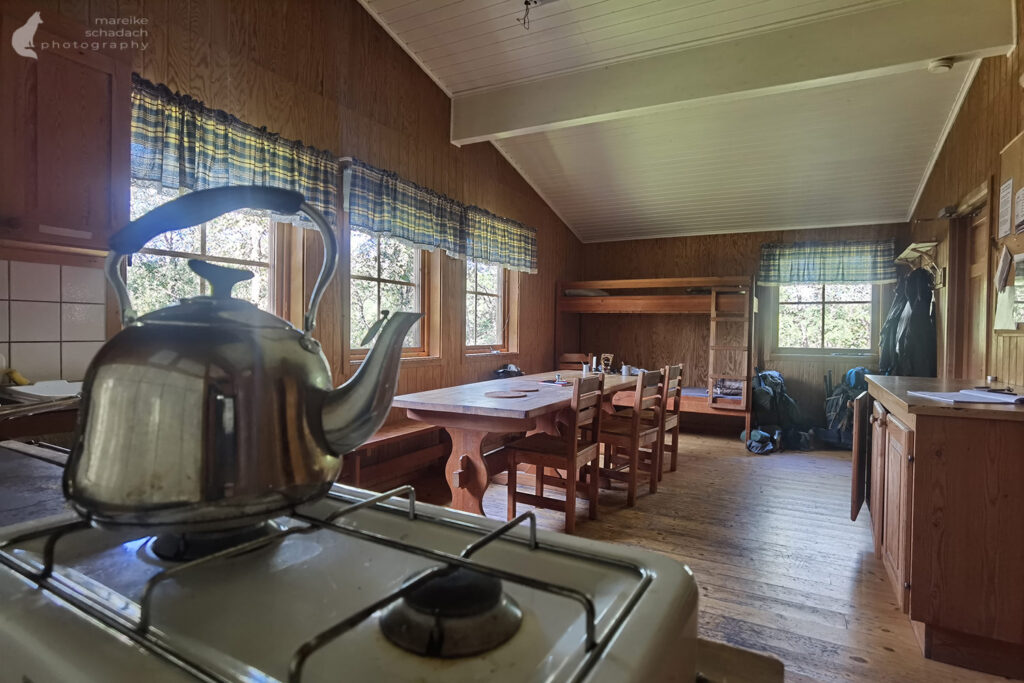


Learning from Nature - Shoe Care
What the little plant can do so easily, my hiking boots can do too... But only after thorough and regular care.
Nature shows us how to do it:
In order for the water to roll off the leaves so nicely, it has to be as water-repellent as possible, for example with a thin layer of wax. A shoe wax is therefore part of my standard equipment on trekking tours. GoreTex membrane in the shoes or not ... how often have I had wet feet even with GoreTex (no, it wasn't sweat). A thin(!) layer of wax on the upper leather of trekking shoes provides additional protection and prevents the leather from becoming brittle. You can rub muddy shoes with a tuft of grass or juniper before waxing. Then apply the wax with your fingers to the cleaned / preferably dry shoes and massage it in gently. Then leave them in the sun for a while to allow the wax to soak in.
Tip: Shoe wax is also easy to make yourself from beeswax and a little wool grease. Without any additional chemicals, the shoe wax also ensures velvety soft hands on tour.

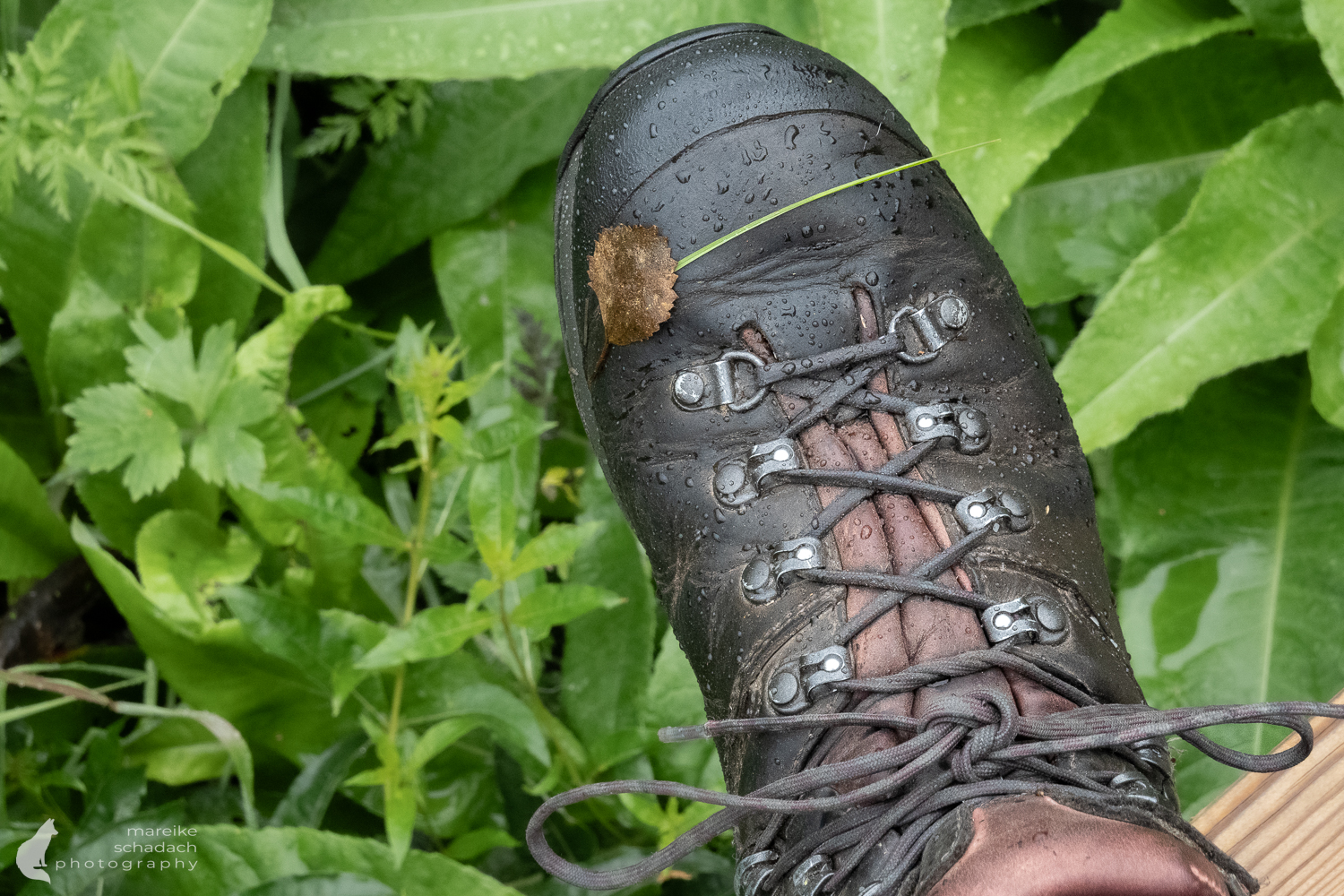
Culinary Highlights on the Trail - it doesn't always have to be bagged Food
Homemade Trekking Food
Quick, easy and convenient: this is how the outdoor industry advertises freeze-dried trekking food in bags at peppery prices. Just pour hot water on it and you've got a one-size-fits-all product that nobody really knows what's in it.
Until recently, I took exactly this kind of food with me on tour. Supplemented by other, cheaper instant noodles from the supermarket. Of course, I knew from other blogs that many hikers make their own trekking food. There are countless recipes on the internet. But somehow the spark just wouldn't ignite. I then acquired a taste for it during my training as a trekking guide. Christoph had brought some things for us to try: dried vegetables, fruit, meat, fish, and homemade pemmican. This was the first thing I made as a veggie variation for my trip to Greenland. My variation was not lightweight, but it was delicious and soooo filling! What was in it? Magarine, oat flakes, corn starch, chopped dried fruit, nuts, and honey.


For our Wilderness Guide training tour in Sweden, I dried a wide variety of ingredients, packed them in airtight containers and then mixed them together on tour as the mood took me. The tour cuisine was definitely not boring and monotonous. What was on the plate? There was, for example, dried sauerkraut or red cabbage with mashed potatoes and dried beef, pre-cooked red lentils with colorful vegetables, or, as a snack between meals, fruit leather made from a pureed mixture of apple sauce, peach, ginger, and lupin protein powder with pumpkin and sesame seeds, chia and psyllium seeds.
Picking Mushrooms and Berries
Almost every day we also had berries and mushrooms on our plates, deliciously sautéed with onions and garlic. In the wet August there were so many mushrooms growing in the birch forests that we no longer said "I'm going out to look for mushrooms" but rather "I'm going out to pick mushrooms". Birch mushrooms were the most common. But there were also porcini mushrooms and butter mushrooms.

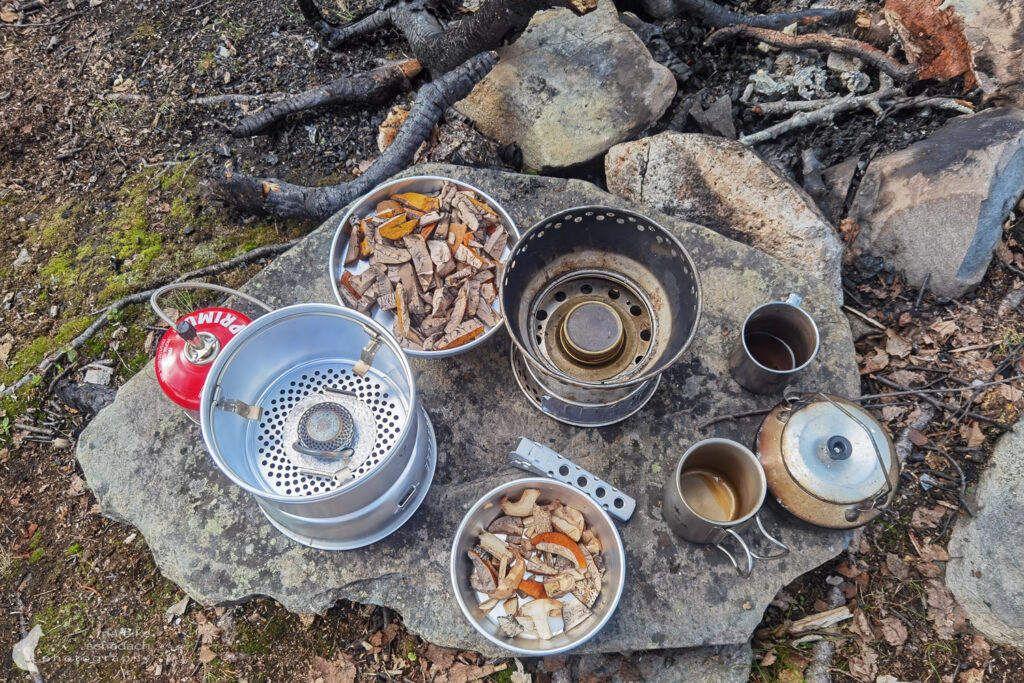

Fishing
We also had fishing gear with us and had each bought a fishing license for seven days in Ammarnäs. But even with the license, fishing is not allowed in all waters. As we had changed our original route due to the weather, we didn't get to the planned fishing waters.
Getting wet at the End: over Hill and Dale with the Packraft
Last but not least, we inflate the packrafts on our last sunny day of our Wilderness Guide training. We put our paddles together, tie our rucksacks to the bow of our rubber boats and strap on our life jackets. Into the boat and off we go. But after a section where the Vindelälven flows wide and calm, the river changes its face. We get out of the boats, take a look at the rapids, and decide to tow the boats along the banks. We work our way along in sections, sometimes in the boat, sometimes on foot. Exactly as we had estimated before the tour using satellite images and existing maps. The white, foaming rapids were clearly visible on the Google Earth satellite images and I added a few details to our hiking map by hand on this basis.
Our day with the packraft on the wild river left a deep impression on me. Shortly afterward, I gave a talk on the subject of nature conservation and packrafting and also wrote a blog article on the subject. In May/June, an abridged version of my article will also be published in Kajak Magazine. You can find the long version "Nature Conservation on Tour – nature-friendly Packrafting" here.
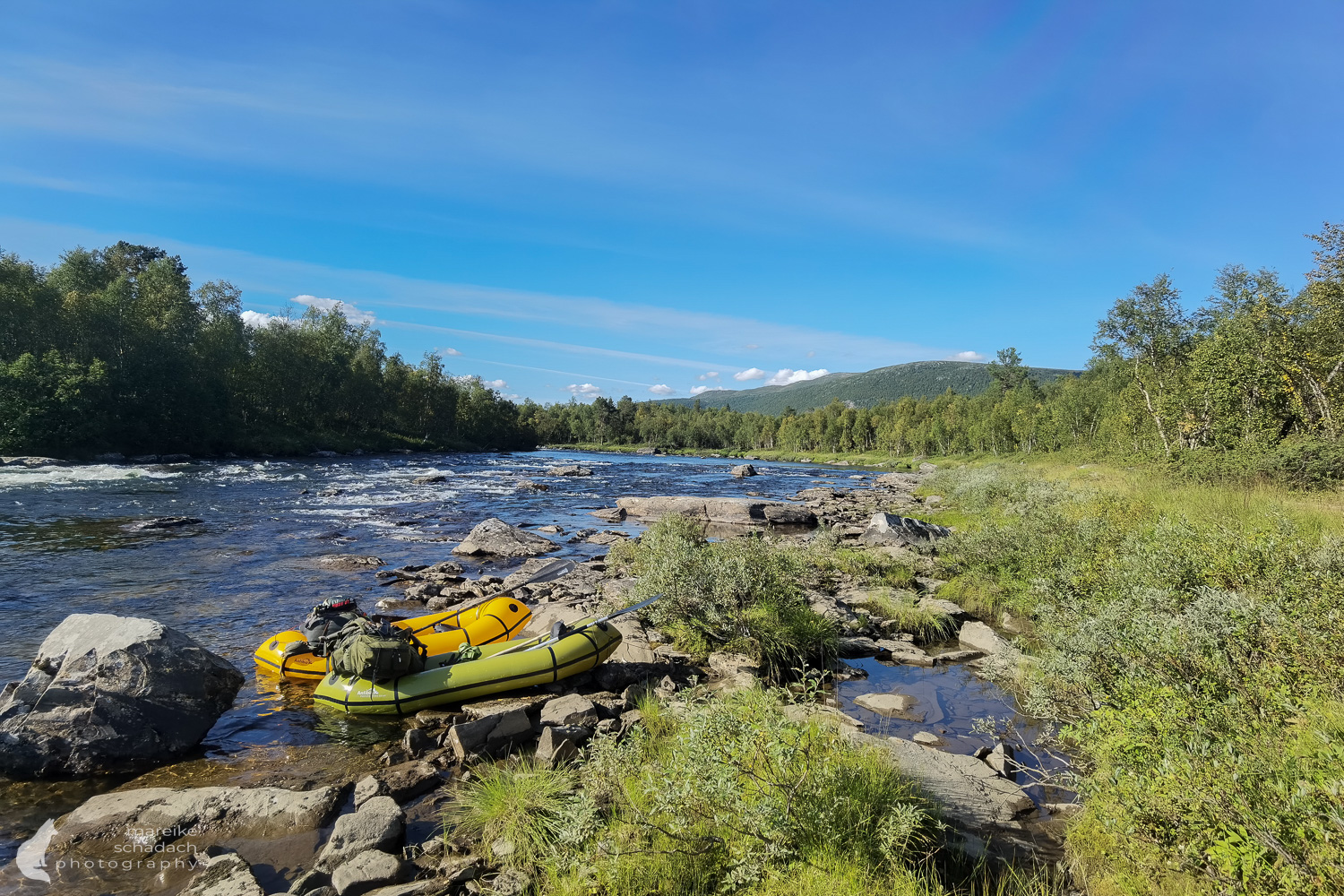
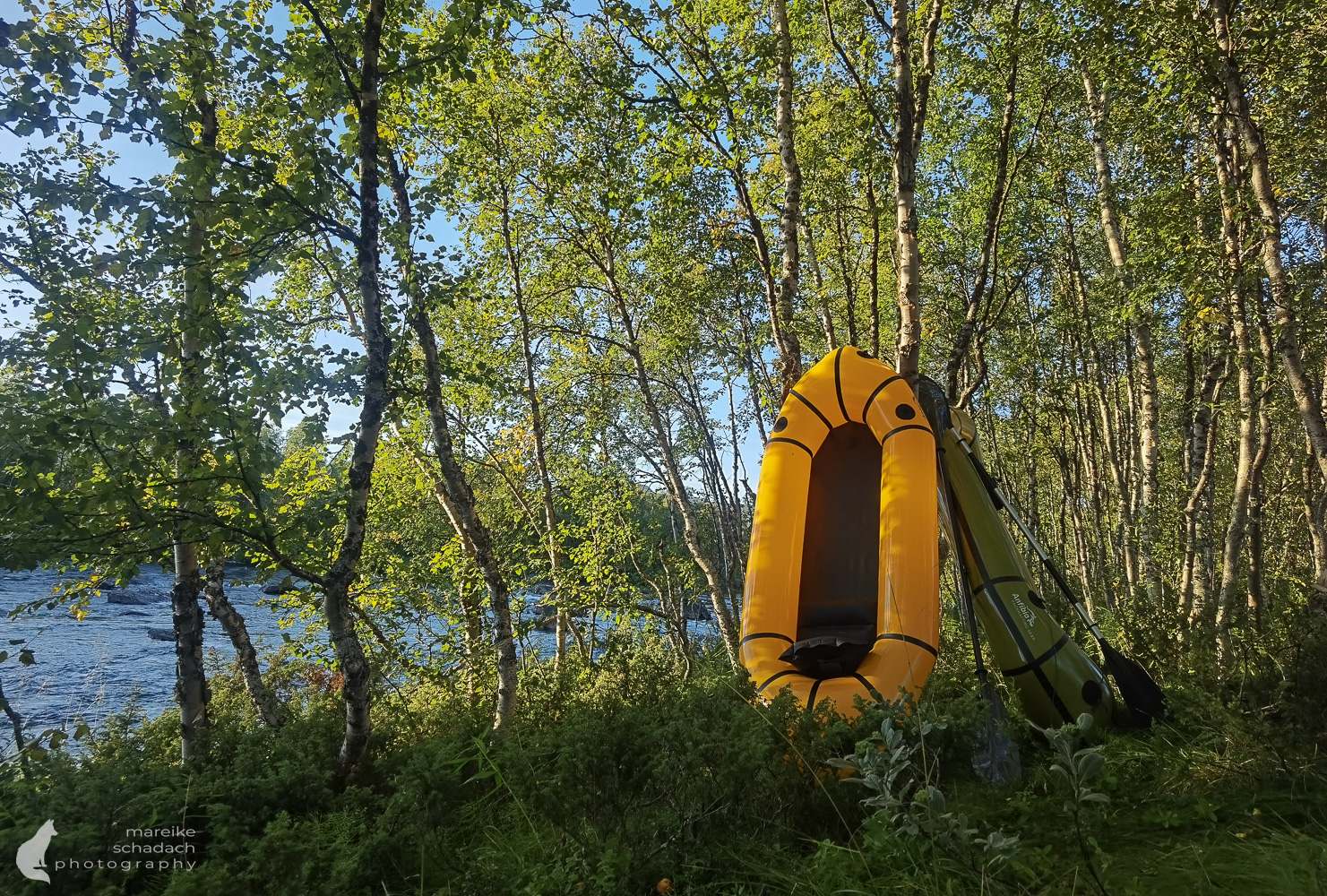
Further Modules of the Wilderness Guide Training at the Guide Academy Europe
Crafts and Bushcraft
The training tour in Vindelfjäll was just one part of the Wilderness Guide training. Other modules I have completed include bushcraft, survival, handicrafts, and cabin life. There will be another article on this soon. But here is a little foretaste:

On the self-built (!) bench made of ash wood you can see forged pot hooks, blanks for knife blades, a forged arrowhead, two built knives, tinder, a carved bowl made of Swiss stone pine, flat bread, cakes from an improvised mold, smoked meat and Swiss stone pine schnapps (also homemade by Christoph, but not on this weekend) with improvised schnapps cups made of tea lights. In front of the bench, there is a self-made pack board with a pack sack (right) based on an old model with an old Romanian army rucksack (left), as well as prepared wood for tool handles and two can stoves. Not in the picture are our improvised kerosene lamp, our landing net, two tool handles and a self-made drill.
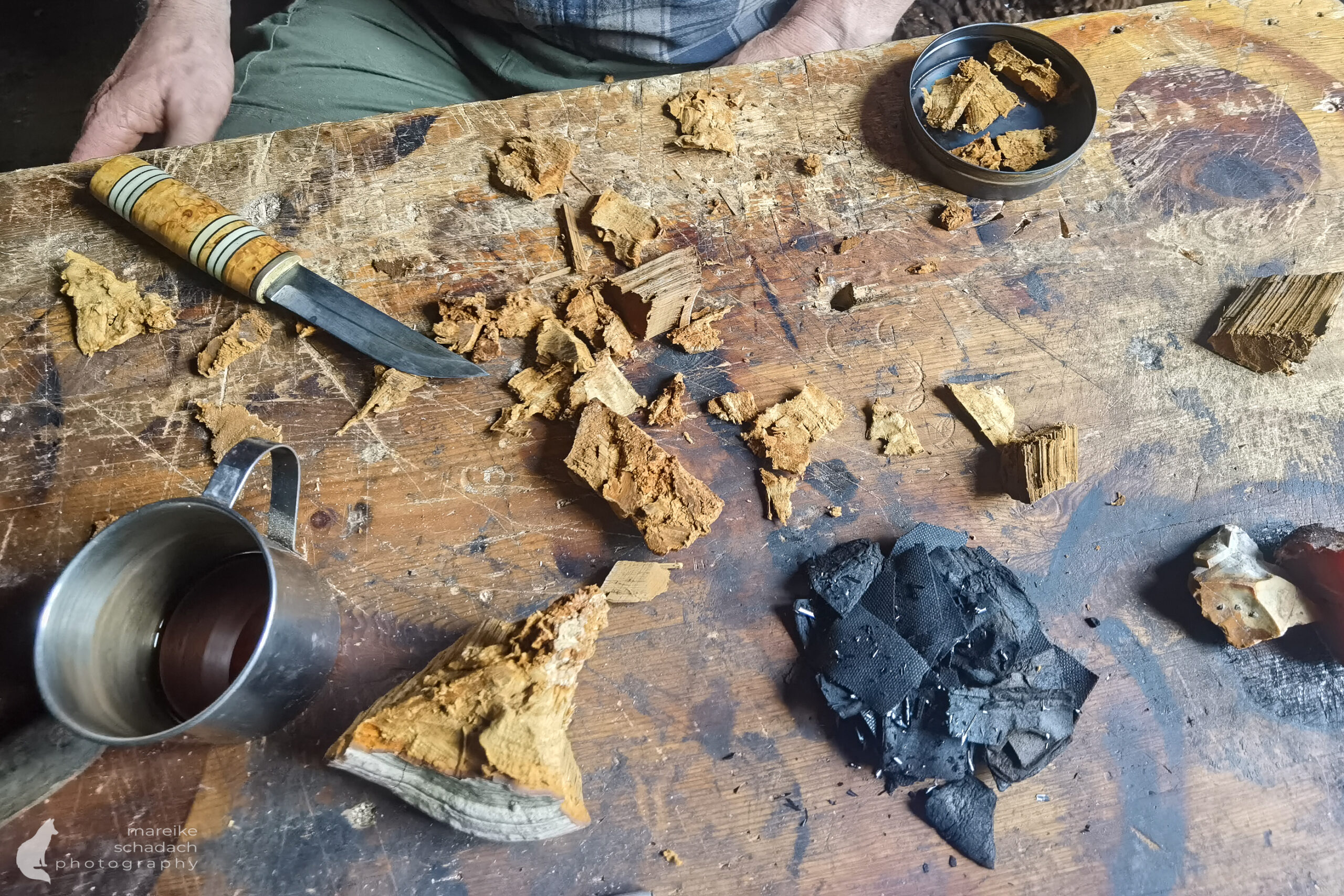
Wilderness Guide Course - Nothing of the Peg
I completed the newly developed Wilderness Guide course as a pilot course in solo training. This allowed me to prepare specifically for my planned year in the north and to practise and gain experience with all the tools and their handling with my own hands. In addition to the fixed modules such as Wilderness Basic Training, Emergency Training, First Aid or Canoe/Packraft, the Wilderness Guide training also includes some optional modules such as carpentry, old tools for camp, and hut or knife making. This means that everyone can deepen their Wilderness Guide training according to their own needs/interests. This distinguishes the Guide Academy training from all other wilderness guide training courses available on the market.
In 2025, GAE will be in its 10th year! The training potential is huge and there is something for everyone. With Christoph and a team of experienced freelancers, participants will get their money's worth. Christoph's outdoor experience, his technical training as a carpenter, his leadership skills learned in the mountain troops and as a mountain hiking guide, and his knowledge of human nature and helpfulness, which he also lives as an experienced social worker and educator, are complemented by craftsmanship and attention to detail. Christoph is characterized by thoroughness and a far-sighted approach, as well as his ability to conjure up something in an emergency in the blink of an eye with little equipment. I hope I'll be able to do the same in the future, whether on tour, at the husky farm or at home in the kitchen...:-)
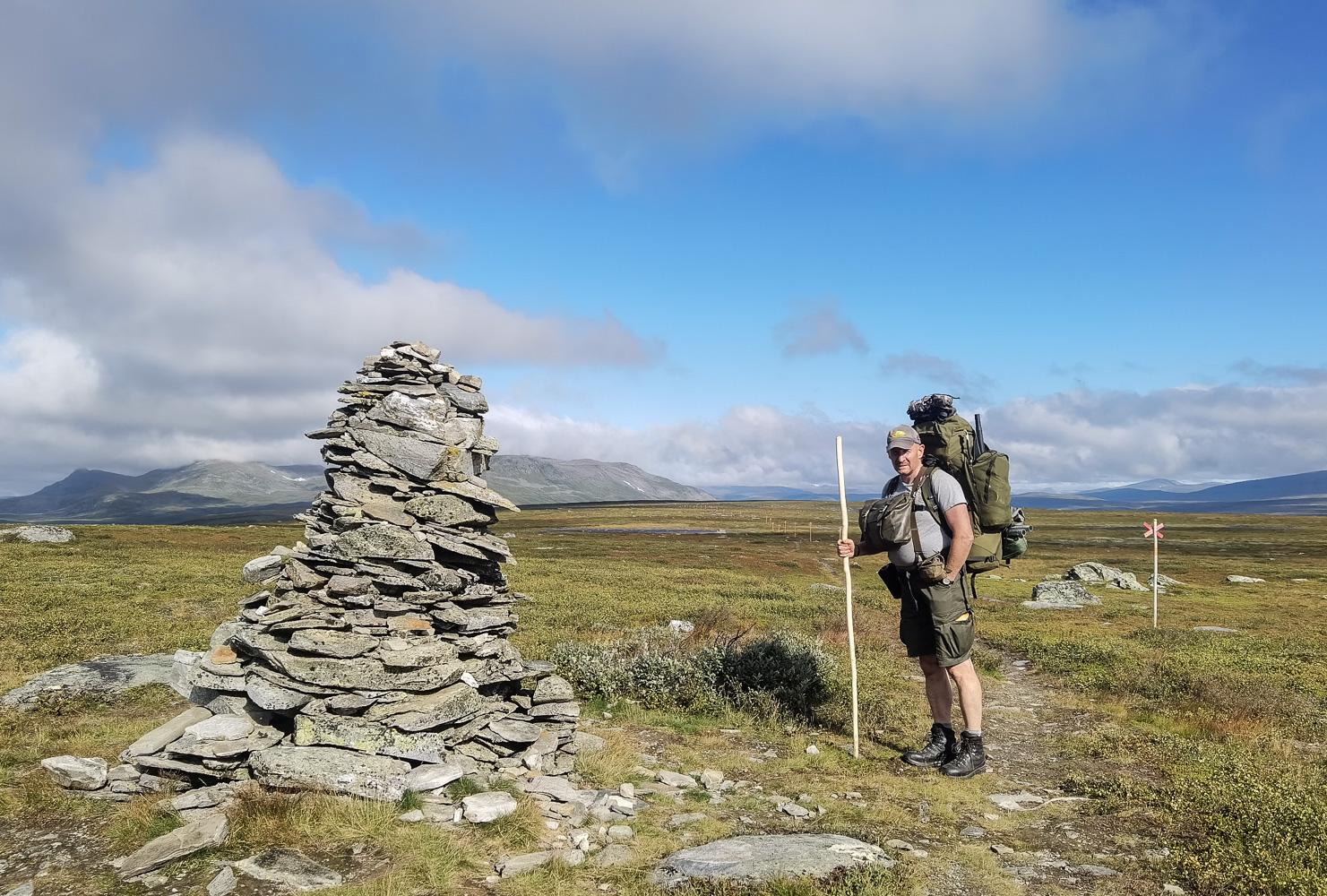
Want to know when there are new articles on my blog? Then follow me on Facebook, Pinterest or Instagram. I am also very happy if you share my article with your friends.
Recommendations for further Reading
Do you love long hikes as much as I do? Then you might also be interested in my articles about the Laugavegur in Iceland or about The 9 most beautiful Hikes on the Isle of Skye.

